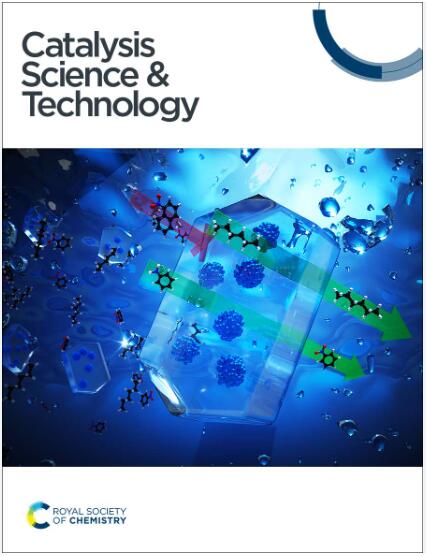Inhibitory effects of residual Cl− on the NO + CO reaction over a supported Pt catalyst†
IF 4.4
3区 化学
Q2 CHEMISTRY, PHYSICAL
引用次数: 0
Abstract
H2PtCl6·6H2O is a widely used platinum precursor, but it can form residual chlorine on catalysts' surface. This study explores the effects of residual Cl− on the NO + CO reaction and demonstrates that the presence of Cl− is detrimental to the reaction performance of CeO2-supported Pt catalysts. Residual Cl− has negligible effect on the dispersion state of the catalytically active Pt component, and it exerts profound effects on tuning the NO dissociation and CO adsorption abilities of the Pt catalyst. The reduction of NO over the Cl-containing Pt catalyst (Cl–Pt/CeO2) initiating at high temperature can be attributed to fewer oxygen vacancies on its surface, which are not conducive to the dissociation of NO, in contrast with the Pt/CeO2 catalyst. In addition, CO interacts strongly with anchored Pt2+, and NO occupies fewer Pt2+ sites in the Cl–Pt/CeO2 catalyst. Hence, fewer NO dissociation sites are present on the Cl–Pt/CeO2 catalyst, deteriorating NO + CO reaction performance. This work paves a way to comprehensively understand the influence of residual Cl− on the NO + CO reaction and can provide insights for selecting suitable metal precursors to avoid harmful interference from residues.
残余Cl−对负载Pt催化剂上NO + CO反应的抑制作用
H2PtCl6·6H2O是一种广泛使用的铂前驱体,但它会在催化剂表面形成余氯。本研究探讨了残余Cl−对NO + CO反应的影响,并证明Cl−的存在不利于ceo2负载Pt催化剂的反应性能。残余Cl−对催化活性Pt组分分散状态的影响可以忽略不计,但对调节Pt催化剂的NO解离和CO吸附能力有深远的影响。与Pt/CeO2催化剂相比,含cl Pt催化剂(Cl-Pt /CeO2)在高温下对NO的还原可以归因于其表面较少的氧空位,这不利于NO的解离。此外,CO与锚定的Pt2+相互作用强烈,而NO在Cl-Pt /CeO2催化剂中占据较少的Pt2+位点。因此,Cl-Pt /CeO2催化剂上的NO解离位点减少,使NO + CO反应性能恶化。这项工作为全面了解残余Cl−对NO + CO反应的影响铺平了道路,并为选择合适的金属前驱体以避免残留物的有害干扰提供了见解。
本文章由计算机程序翻译,如有差异,请以英文原文为准。
求助全文
约1分钟内获得全文
求助全文
来源期刊

Catalysis Science & Technology
CHEMISTRY, PHYSICAL-
CiteScore
8.70
自引率
6.00%
发文量
587
审稿时长
1.5 months
期刊介绍:
A multidisciplinary journal focusing on cutting edge research across all fundamental science and technological aspects of catalysis.
Editor-in-chief: Bert Weckhuysen
Impact factor: 5.0
Time to first decision (peer reviewed only): 31 days
 求助内容:
求助内容: 应助结果提醒方式:
应助结果提醒方式:


